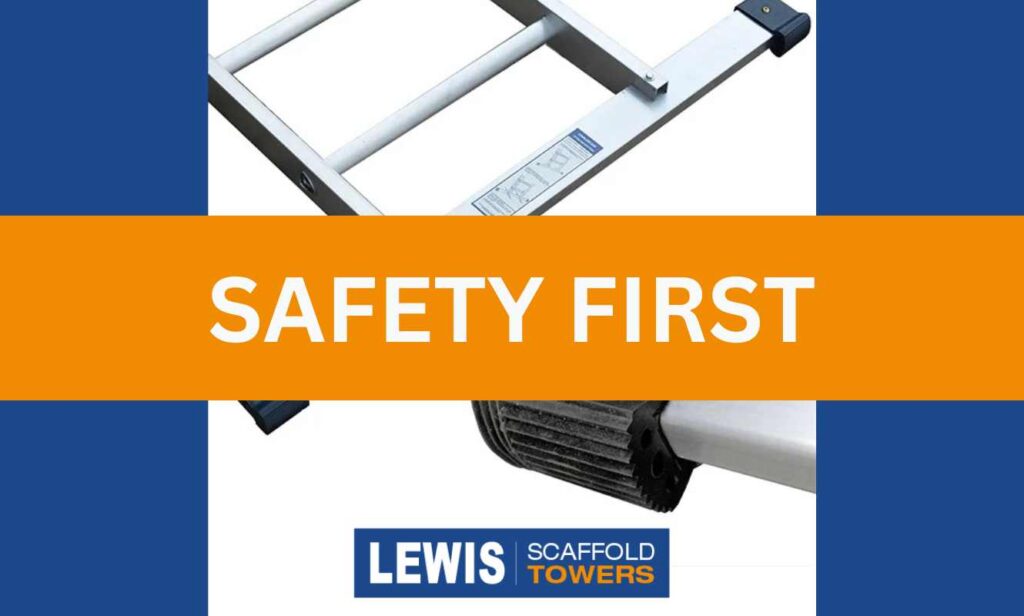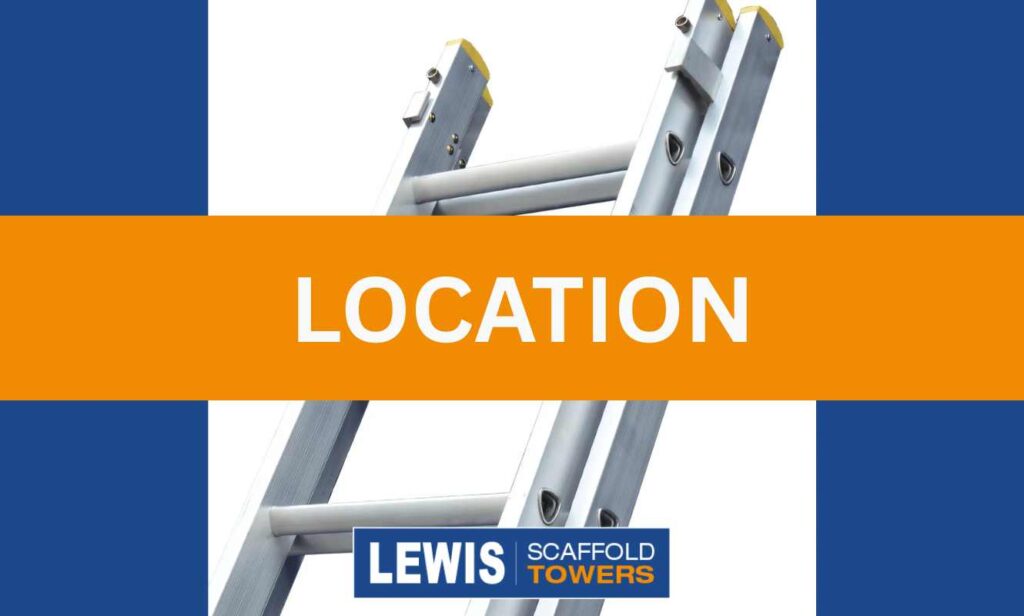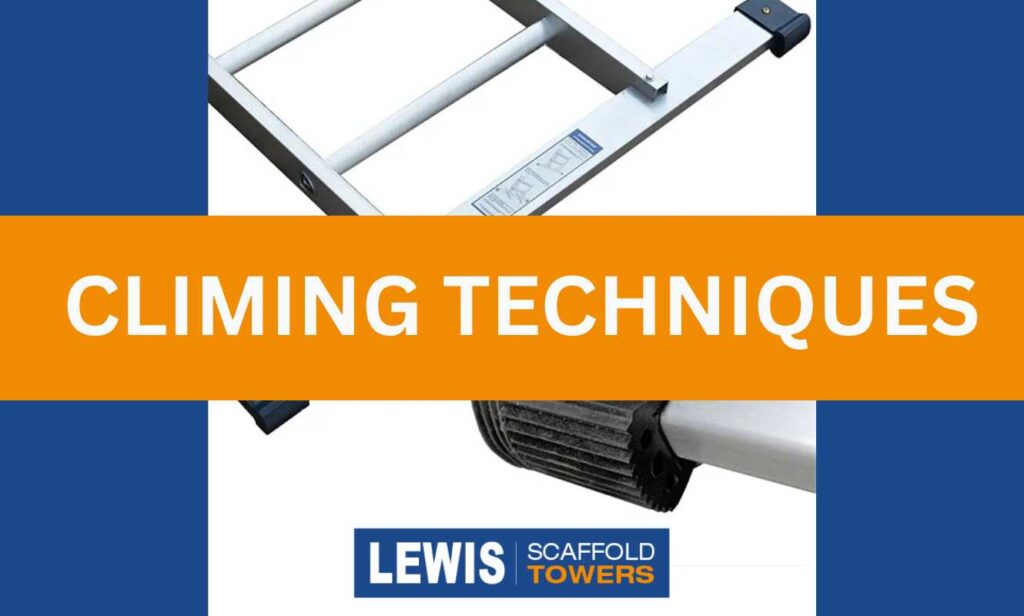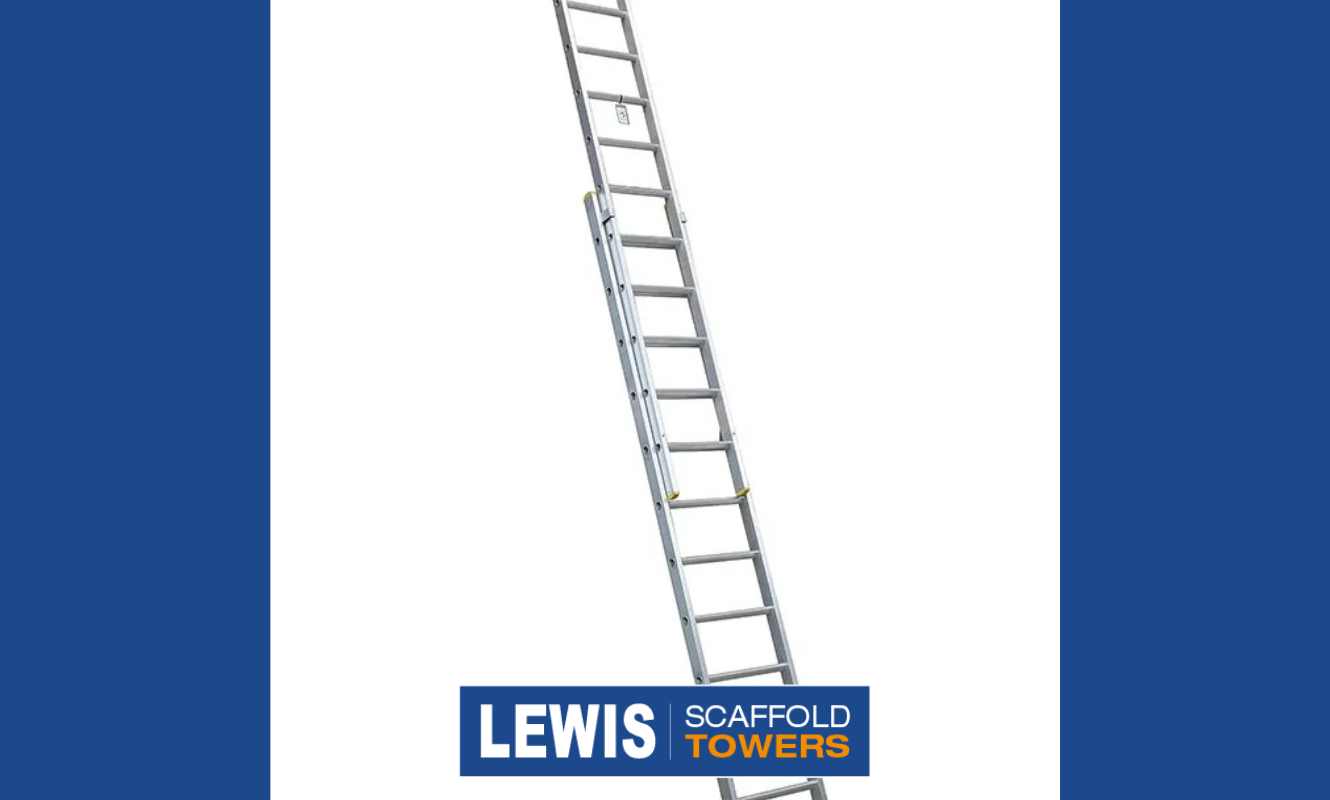Using a double extension ladder can be a daunting task, but with the right guidance, it can become a valuable tool in your toolkit. Unlike standard single-section ladders and step ladders, an aluminium ladder can be adjusted to reach different heights, making it a versatile asset for various jobs around the home.
Whether you’re painting walls or cleaning gutters, a professional ladder like a double extension ladder is essential for getting the job done safely and efficiently. However, it’s crucial to use it correctly to avoid accidents.
In this guide, we’ll walk you through the proper usage of a double extension ladder, highlighting key safety considerations and best practices to ensure a successful outcome.
Key Takeaways
- Choose the right ladder for the job, considering factors like height and weight capacity.
- Always inspect the ladder before use, checking for damage or wear.
- Ensure a safe working environment by clearing the area of obstacles.
- Use proper climbing techniques, maintaining three points of contact.
- Regularly maintain your ladder to extend its lifespan.
Understanding Double Extension Ladders
Understanding the functionality of double extension ladders is crucial for their safe and effective use. These ladders are designed to provide extra height by extending their two main sections: the base section and the fly section.
What is a Double Extension Ladder?
A double extension ladder is a type of ladder that allows users to reach higher areas by extending its sections. This is particularly useful for tasks such as painting, gutter cleaning, and window cleaning. The ladder’s design enables it to be more compact for storage while still offering the ability to achieve significant heights.
Difference from Single Extension Ladders
Unlike single extension ladders, double extension ladders have two sections that can be extended. This feature provides greater flexibility and reach. The key difference lies in their ability to offer more height without the need for a longer single section, making them more manageable for storage and transport.
Common Applications
Double extension ladders are commonly used for various tasks that require accessing high areas. Some of the most common applications include:
- Painting and decorating high ceilings and walls
- Cleaning gutters and downspouts
- Accessing high windows for cleaning or maintenance
- Performing maintenance tasks on high fixtures
As highlighted by a professional in the field, “Double extension ladders are indispensable for tasks that require both height and stability.” Their versatility and reach make them a valuable tool for both professionals and homeowners.
Safety Considerations Before Use
The safe use of a double extension ladder begins with a thorough safety check. Ensuring that your ladder is in good condition is crucial for preventing accidents and guaranteeing a safe working environment.

Pre-Use Inspection Checklist
Before using your double extension ladder, it’s essential to conduct a pre-use inspection. This involves checking several critical components to ensure they are in good working order.
Structural Integrity Checks
Inspect the ladder’s rungs, rails, and other structural components for any signs of damage or wear. Look for cracks, dents, or corrosion that could compromise the ladder’s integrity. Ensure all rungs are securely attached and not loose.
Moving Parts Assessment
Check the moving parts of the ladder, such as the hinges and the rung lock, to ensure they are functioning correctly. The rung lock should securely lock the rungs in place, preventing any accidental movement.
As a general guideline, a pre-use inspection checklist should include:
- Inspecting for damaged or loose rungs
- Checking the rung lock functionality
- Assessing the overall structural integrity
- Ensuring all safety labels are present and legible
By following this checklist, you can significantly reduce the risk of accidents when using a double extension ladder.
“A ladder is only as safe as the person using it.” Regular inspections and proper maintenance are key to ensuring ladder safety.
Proper Double Extension Ladder Setup
Setting up a double extension ladder correctly is crucial for safe and effective use. A well-set-up ladder ensures stability and reduces the risk of accidents.

Choosing the Right Location
Selecting the right location for your double extension ladder is vital. You need to consider several factors to ensure the ladder is stable and secure.
Overhead Hazard Assessment
Before setting up your ladder, assess the area for overhead hazards such as power lines, branches, or other obstructions. It’s crucial to maintain a safe distance from these hazards to prevent accidents.
Distance from Building
The distance of the ladder’s base from the building is critical for stability. A general rule of thumb is to position the ladder one foot away from the wall for every four feet of ladder height. This ensures the ladder remains stable and reduces the risk of it tipping over.
| Ladder Height (feet) | Distance from Wall (feet) |
|---|---|
| 8 | 2 |
| 12 | 3 |
| 16 | 4 |
In addition to the distance from the wall, ensure the ladder is placed on a firm, level surface. Avoid uneven or slippery surfaces, as they can cause the ladder to shift or slip.
By following these guidelines, you can ensure a proper setup for your double extension ladder, enhancing both safety and effectiveness.
Extending Your Double Extension Ladder Safely
To extend a double extension ladder safely, one must understand its mechanics. The safety of the user and others nearby depends on the proper extension and securing of the ladder.
Double extension ladders are equipped with a rope and pulley system that facilitates the extension process. Understanding how this system works is crucial for safe operation.
The Rope and Pulley System
The rope and pulley system is a critical component of a double extension ladder, enabling users to extend the ladder with minimal effort. When using this system, it’s essential to ensure that the rope is not tangled or twisted, as this can hinder the extension process or cause accidents.
Proper Handling Techniques
To extend the ladder, pull the rope gently but firmly. Ensure that the rung locks are engaged to secure the fly section in place. Proper handling techniques are vital to prevent accidents and ensure the ladder is stable.
Common Rope System Variations
Different manufacturers may have variations in their rope and pulley systems. Familiarize yourself with the specific system’s operation and maintenance requirements to ensure safe and effective use.
| Rope System Feature | Description | Benefit |
|---|---|---|
| Pulley System | Reduces effort needed to extend the ladder | Eases ladder extension |
| Rung Locks | Secures the fly section in place | Enhances ladder stability |
| Rope Material | Durable and resistant to wear | Prolongs system lifespan |
By understanding the rope and pulley system and using proper handling techniques, you can extend your double extension ladder safely and efficiently.
Climbing Techniques for Double Extension Ladders

When using a double extension ladder, it’s crucial to employ safe climbing techniques to minimize the risk of accidents. Climbing safely is not just about avoiding falls; it’s about ensuring that you can work effectively at heights without putting yourself or others at risk.
The Three-Point Contact Rule
Maintaining three points of contact with the ladder at all times is fundamental to safe climbing. This can be achieved by having either two hands and one foot or two feet and one hand on the ladder. This rule helps to stabilize your body and reduces the likelihood of slipping or falling.
Proper Hand Positioning
Proper hand positioning is vital for maintaining grip and control on the ladder. Ensure that your hands are placed on the rungs, not the rails, and that your grip is firm but not overly tense. This helps in maintaining balance and reduces fatigue.
Foot Placement
Foot placement is equally important as hand positioning. Place your feet in the center of the rungs, ensuring they are secure and balanced. Avoid standing on the top rung unless it’s specifically designed for that purpose and you have taken necessary safety precautions.
| Climbing Technique | Description | Benefit |
|---|---|---|
| Three-Point Contact | Maintain two hands and one foot or two feet and one hand on the ladder | Enhanced stability and reduced risk of falls |
| Proper Hand Positioning | Place hands on rungs, ensuring a firm grip | Improved control and balance |
| Correct Foot Placement | Stand on the center of the rungs | Better balance and reduced risk of slipping |
Working at Height on a Double Extension Ladder
To work safely at height on a double extension ladder, it’s crucial to understand the principles of balance and stability. Working at height can be intimidating, but with the right techniques and precautions, you can minimize the risks associated with using a double extension ladder.
Maintaining Balance and Stability
Maintaining your balance is essential when working at height on a double extension ladder. This involves ensuring that your body remains between the ladder’s side rails at all times. Overreaching or leaning to one side can significantly increase the risk of falling.
Body Positioning Techniques
Proper body positioning is vital for maintaining balance. Keep your hips centred between the side rails and avoid twisting or turning, which can cause you to lose your balance. Instead, move your feet to reposition yourself.
Weight Distribution
Evenly distributing your weight between the ladder’s side rails is crucial. Avoid placing too much weight on one side, as this can cause the ladder to tip or become unstable. By keeping your weight centred, you can maintain better control and reduce the risk of accidents.
By following these guidelines and being mindful of your body positioning and weight distribution, you can work more safely at height on a double extension ladder. Remember, safety is paramount, and taking the time to ensure you’re working correctly can make all the difference.
Using Double Extension Ladders for Specific Tasks
Painting and decorating are just a couple of the many tasks that can be efficiently carried out using a double extension ladder. These tasks often require working at heights, and the stability and flexibility of a double extension ladder make it an ideal tool.
Painting and Decorating
When undertaking painting and decorating tasks, it’s essential to have the right equipment and techniques. A double extension ladder provides the necessary height, but you also need to consider how to manage your painting tools and materials.
Paint Bucket Attachment Options
One practical solution for painting tasks is to use a paint bucket with a hook that can be hung on the ladder rung. This keeps your paint within easy reach and frees up your hands for climbing or painting.
- Look for paint buckets with sturdy hooks that can securely hold the bucket on the ladder.
- Consider using a paint bucket with a lid to prevent spills.
- Some ladders come with built-in tool holders or trays that can be useful.
Brush and Roller Techniques
The choice of brush or roller can significantly impact the outcome of your painting task. For high areas, using an extension pole with a roller can be very effective.
| Task | Recommended Tool | Tip |
|---|---|---|
| Painting high ceilings | Extension pole with roller | Work in sections to maintain even coverage. |
| Detailed work | High-quality brush | Use a steady hand and work slowly. |
| Large wall areas | Roller with extension pole | Use a ‘W’ or ‘M’ pattern to avoid streaks. |
By choosing the right tools and techniques, you can efficiently complete painting and decorating tasks using a double extension ladder.
Comparing Double Extension Ladders with Other Types
The variety of ladders on the market can be overwhelming; let’s break down the key differences.
Double Extension vs Telescopic Ladders
When deciding between double extension ladders and telescopic ladders, two critical factors come into play: stability and portability.
Stability Differences
Double extension ladders are known for their stability, thanks to their wide base and sturdy construction. Telescopic ladders, while versatile, may not offer the same level of stability, particularly when fully extended.
In situations where stability is paramount, such as working at heights or on uneven surfaces, double extension ladders are often the preferred choice.
Portability Considerations
Telescopic ladders, on the other hand, excel in terms of portability. Their compact design makes them easy to transport and store, ideal for jobs that require frequent relocation.
Double extension ladders, while less portable, can still be managed with the right equipment and assistance.
Ultimately, the choice between double extension and telescopic ladders depends on the specific needs of your task, weighing the importance of stability against portability.
Maintaining Your Double Extension Ladder
Maintaining your double extension ladder is not just about longevity; it’s about safety too. A well-cared-for ladder is less likely to fail during use, reducing the risk of accidents.
Cleaning Procedures
Regular cleaning is vital to remove dirt and debris that can compromise the ladder’s integrity. Start by inspecting the ladder for any visible dirt or grime.
Removing Dirt and Debris
Use a soft brush or cloth to gently remove any loose particles from the ladder’s surface, paying particular attention to the joints and moving parts.
Lubricating Moving Parts
After cleaning, lubricate the moving parts to ensure smooth operation. Apply a suitable lubricant to the pulleys, ropes, and hinges to keep them functioning correctly.
By following these simple maintenance steps, you can significantly extend the life of your double extension ladder and ensure it remains a safe tool for your tasks.
Troubleshooting Common Issues with Double Extension Ladders
One of the most common issues users face with double extension ladders is stuck extensions, which can be both frustrating and dangerous. When this happens, it’s crucial to address the problem safely to avoid accidents.
Stuck Extensions
Stuck extensions can occur due to debris, corrosion, or wear and tear. Understanding the cause is key to resolving the issue effectively.
Diagnosing the Problem
To diagnose the problem, inspect the ladder’s extension mechanism for any debris or signs of corrosion. Check if the ladder’s rungs or the extension parts are damaged or worn out.
Safe Unsticking Methods
To safely unstuck the extension, first, clean out any debris. If corrosion is the issue, apply a suitable lubricant. Avoid using force, as it could damage the ladder further.
| Cause | Solution |
|---|---|
| Debris | Clean out debris |
| Corrosion | Apply lubricant |
| Wear and Tear | Inspect and replace damaged parts |
Legal Requirements and Standards for Ladder Use in the UK
Understanding the legal requirements for ladder use in the UK is crucial for ensuring safety and compliance. The UK has a comprehensive framework governing ladder safety, primarily centered around British Standards.
Ladder Safety Standards
The use of ladders in the UK is governed by the BS EN131 standard, a widely recognized benchmark for ladder safety across Europe. This standard ensures that ladders are designed and manufactured to provide a safe working platform when used correctly.
BS EN131 Explained
The BS EN131 standard specifies the requirements for the design, testing, and manufacture of ladders. It covers aspects such as the strength, stability, and safety features of ladders, ensuring they can support the intended load and withstand various working conditions.
Certification Markings
Ladders that comply with the BS EN131 standard are marked with certification labels. Users should always look for these markings when purchasing or using a ladder, as they indicate that the product has been tested and certified to meet the required safety standards.
By adhering to these legal requirements and British Standards, individuals and organizations can significantly reduce the risk of accidents involving ladders. It’s essential for all users to familiarize themselves with these standards to ensure a safe working environment.
Conclusion
Using a double extension ladder safely requires attention to detail, proper training, and adherence to safety guidelines. Throughout this guide, we have explored the essential aspects of working with double extension ladders, from understanding their structure to maintaining safety while working at heights.
The importance of safety cannot be overstated when it comes to double extension ladders. By following the guidelines outlined in this article, individuals can minimise risks and ensure a safe working environment. This includes conducting pre-use inspections, setting up the ladder correctly, and maintaining three-point contact while climbing. Also, it is vital to know how to work out what size ladder you need.
In conclusion, the safe use of a double extension ladder is paramount. By applying the knowledge gained from this guide, users can significantly reduce the risk of accidents. It is crucial to remain vigilant and committed to safety protocols when working with ladders. For further information on ladder safety and British Standards, refer to the relevant resources and guidelines.
FAQ
What is the correct angle for setting up a double extension ladder?
The correct angle is approximately 75 degrees, which can be achieved by positioning the base one foot away from the wall for every four feet of ladder height.
How often should I inspect my double extension ladder?
You should inspect your double extension ladder before each use, checking for damage, wear, and ensuring all parts are functioning correctly.
Can I use a double extension ladder on uneven ground?
It is not recommended to use a double extension ladder on uneven ground as it can compromise stability. If necessary, use levelling devices to ensure the ladder is level.
What is the BS EN131 standard for ladders?
The BS EN131 standard is a European standard that specifies the requirements and test methods for ladders, ensuring they are safe for use. Ladders that meet this standard are certified and marked accordingly.
How do I maintain my aluminium double extension ladder?
To maintain your aluminium double extension ladder, regularly clean it, check for damage, and lubricate moving parts. Store it in a dry place, away from direct sunlight.
What are the benefits of using a double extension ladder over a single extension ladder?
Double extension ladders offer greater versatility and reach compared to single extension ladders, making them suitable for a wider range of tasks and higher areas.
Can I use a double extension ladder for painting and decorating tasks?
Yes, double extension ladders are suitable for painting and decorating tasks, providing the necessary height and stability. Consider using paint bucket attachments for convenience.
How do I safely extend a double extension ladder?
To safely extend a double extension ladder, ensure you are standing on a firm, level surface, hold the ladder correctly, and use the rope and pulley system smoothly, avoiding jerky movements.
What is the three-point contact rule when climbing a ladder?
The three-point contact rule means maintaining three points of contact with the ladder at all times, either two hands and one foot or two feet and one hand, to ensure stability and balance.
What should I do if my double extension ladder has stuck extensions?
If your double extension ladder has stuck extensions, carefully inspect the area, clean any dirt or debris, and apply lubricant if necessary. Avoid using force, which could cause damage.
How does a telescopic ladder compare to a double extension ladder?
Telescopic ladders are more compact and portable, while double extension ladders offer greater height and versatility. The choice between them depends on specific needs and preferences.



